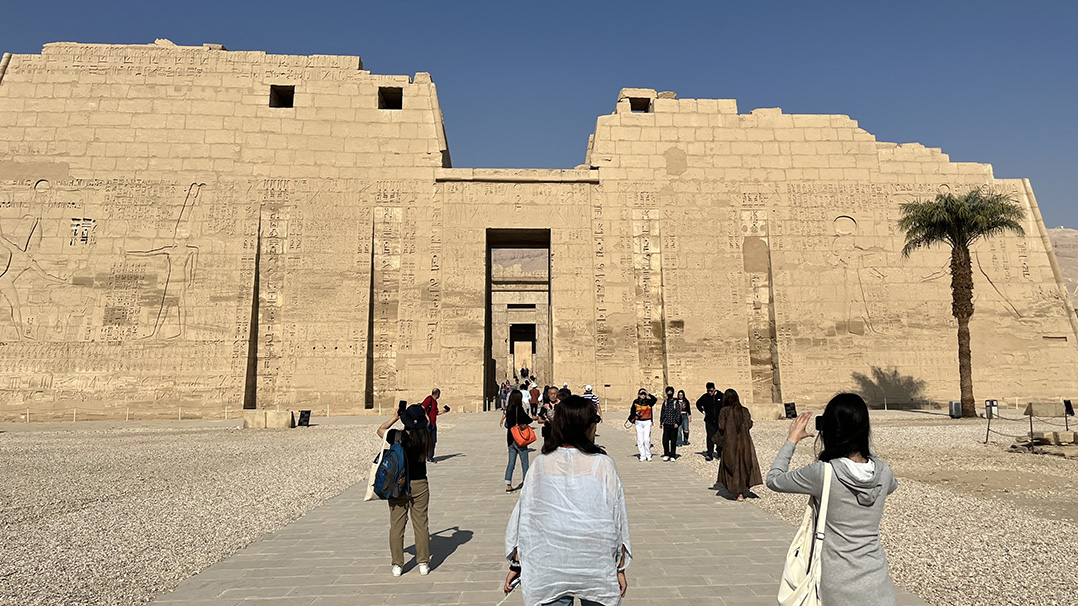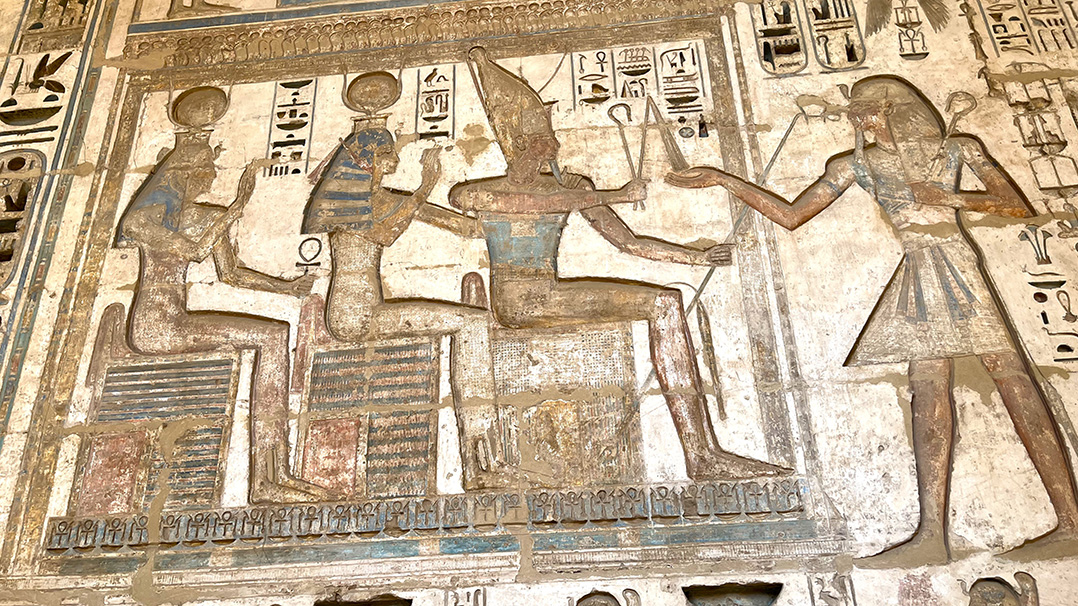In our continuing tour of Egypt, we visit Medinet Habu, on the west bank of the Nile River across from Luxor.
Medinet Habu is the name for the mortuary temple of Pharaoh Ramses III, who ruled Egypt from 1186 B.C. until his death in 1155 B.C. The well-preserved temple celebrated the pharaoh’s earthly achievements and allowed priests to nourish his soul so he could live forever as a god. Columns in the hypostyle hall of his 150-meter-long temple show Ramses among the gods. Statues in a courtyard portray him as Osiris, god of the afterlife.
Carvings on the north exterior wall portray Ramses and his troops battling a confederation of invading “sea people,” predominantly people the Egyptians called Pelesets and the Bible calls Philistines. The carvings show the invaders riding three-man chariots pulled by two horses, wielding double-edged swords and long spears, carrying round shields and wearing feathered headdresses. According to the hieroglyphic account, Ramses defeated the invaders, taking many of them prisoner.
Most scholars believe the sea people described at Medinet Habu left the Aegean Sea area in about 1200 B.C. for reasons unknown and sought to settle in Egypt. After Ramses III beat them back, they moved into nearby areas. The Philistines took what is now the Gaza Strip area along the eastern Mediterranean coast. According to the Bible, as the Israelites entered their Promised Land, they stayed clear of the Philistines, apparently because of their superior iron weapons and fighting skill. The Philistines later moved aggressively into Israel’s heartland until young David killed their champion Goliath and they retreated to five cities along the coast.








